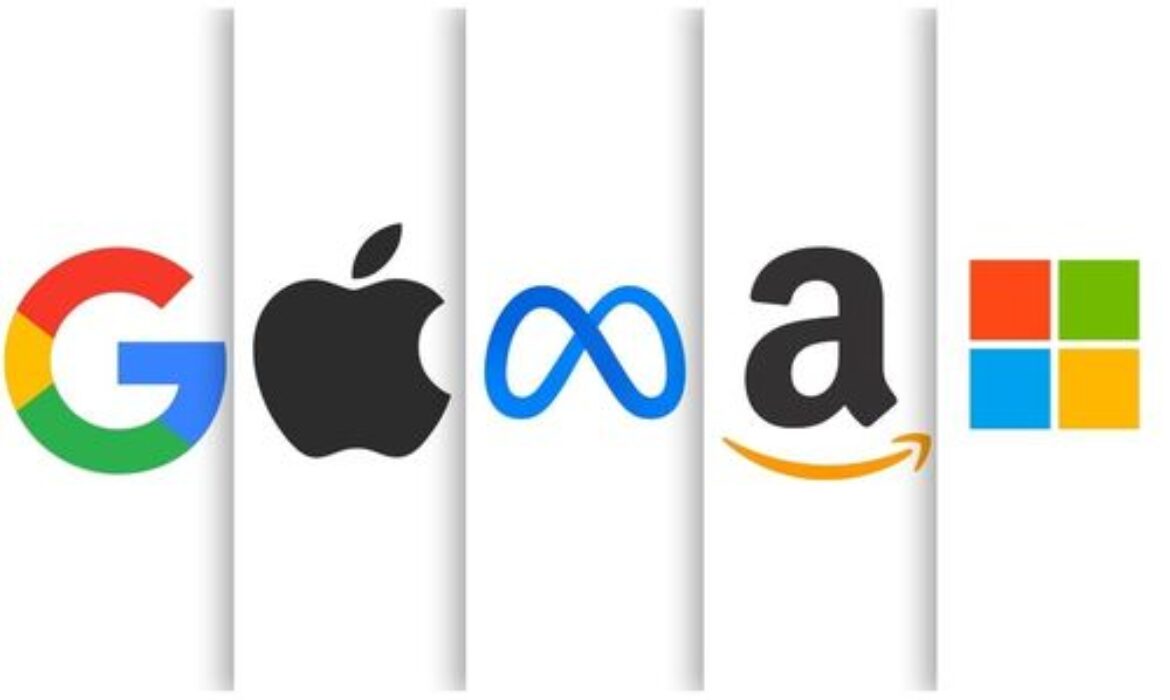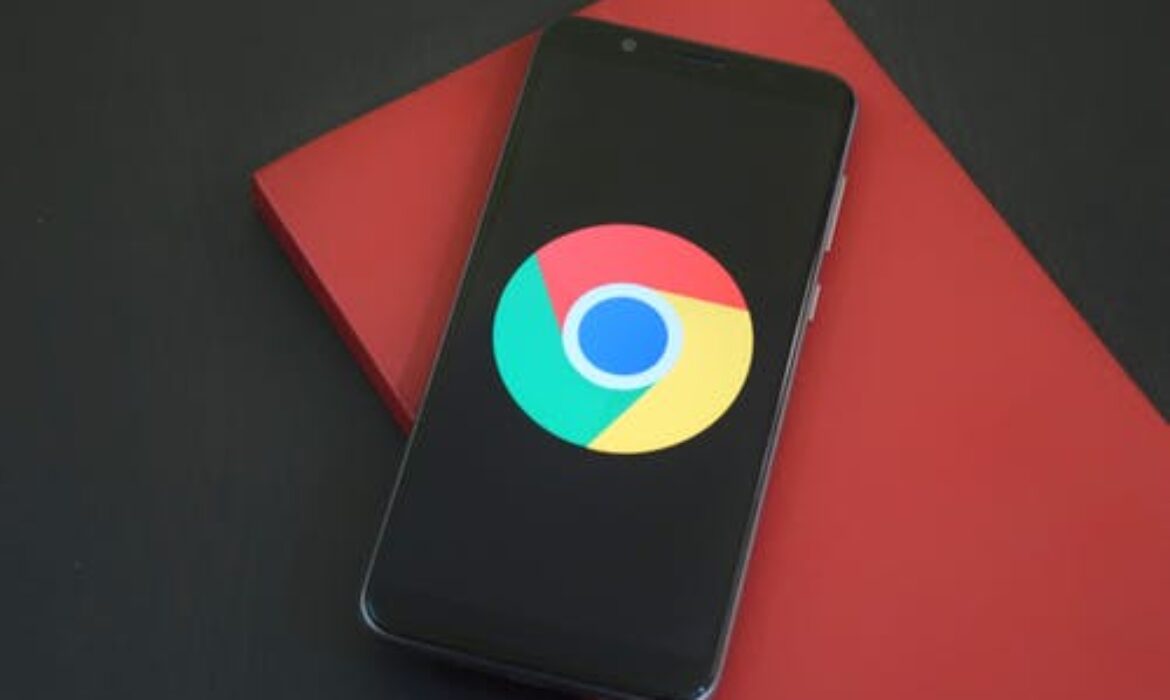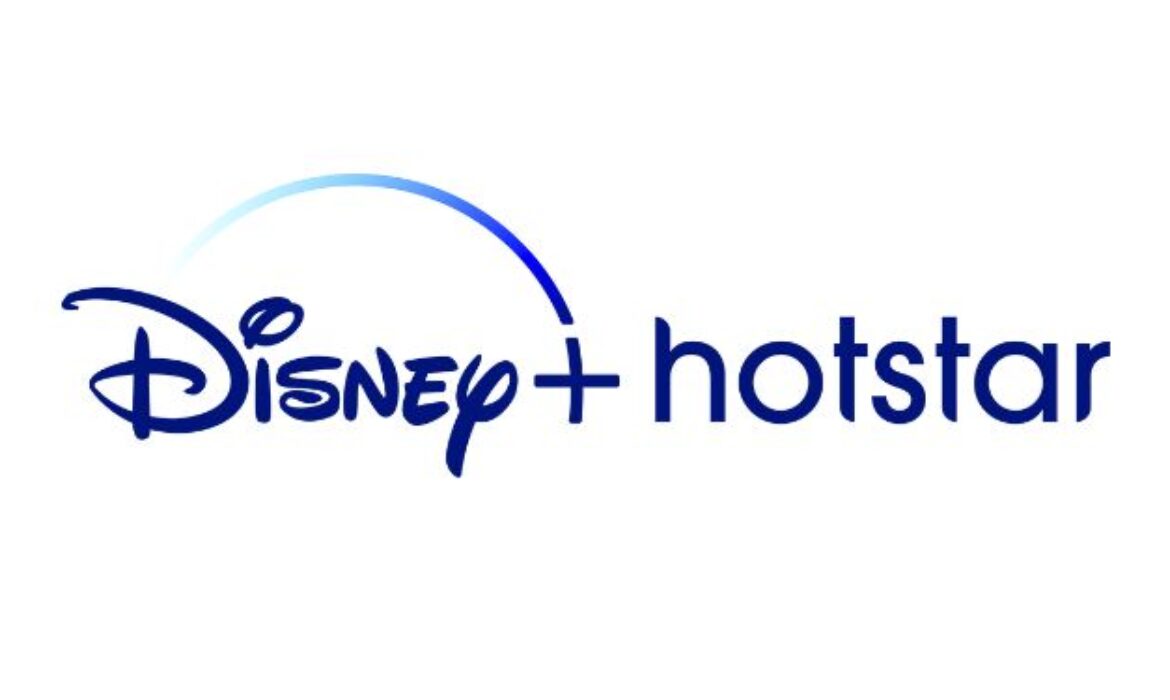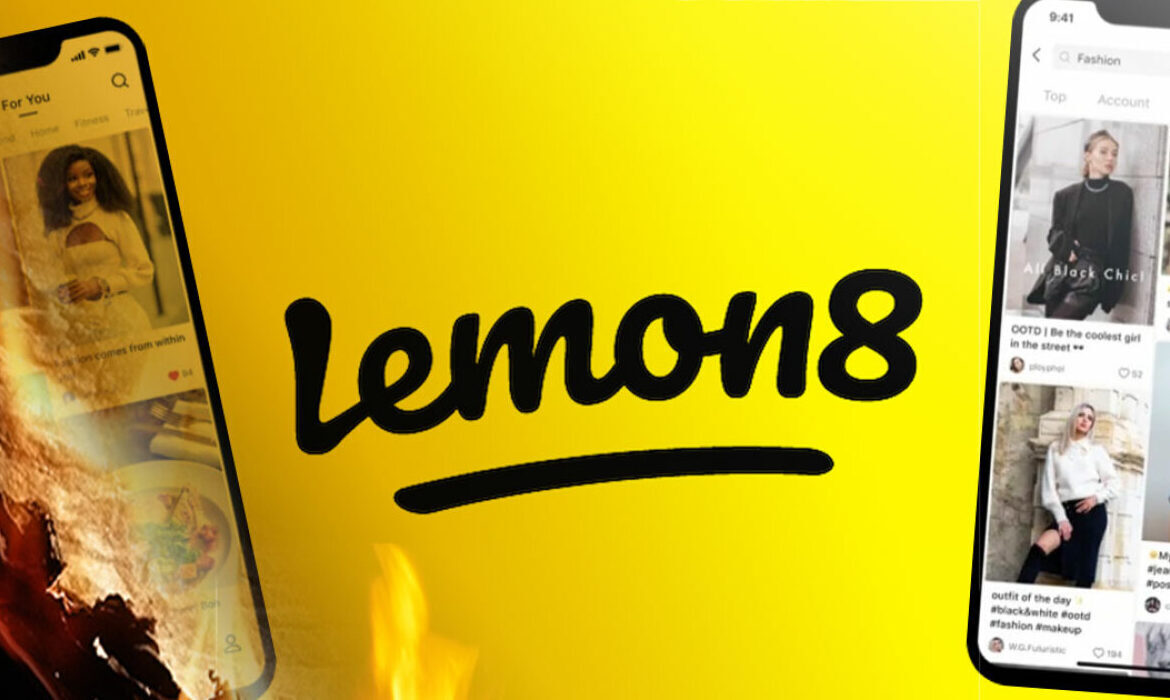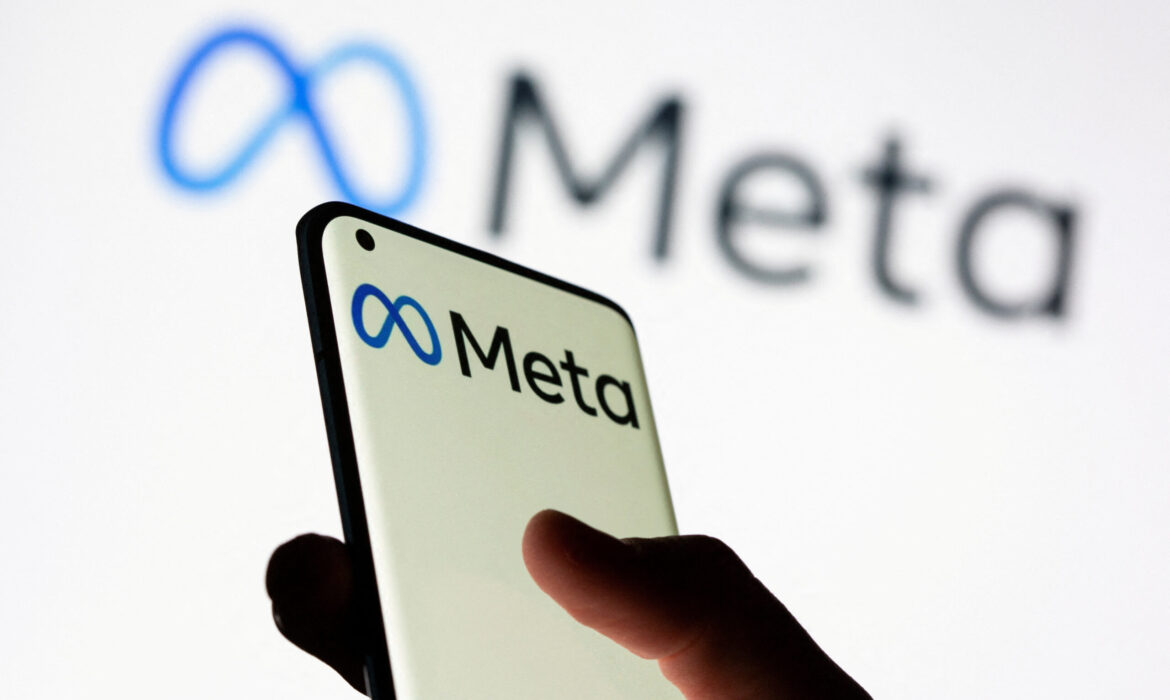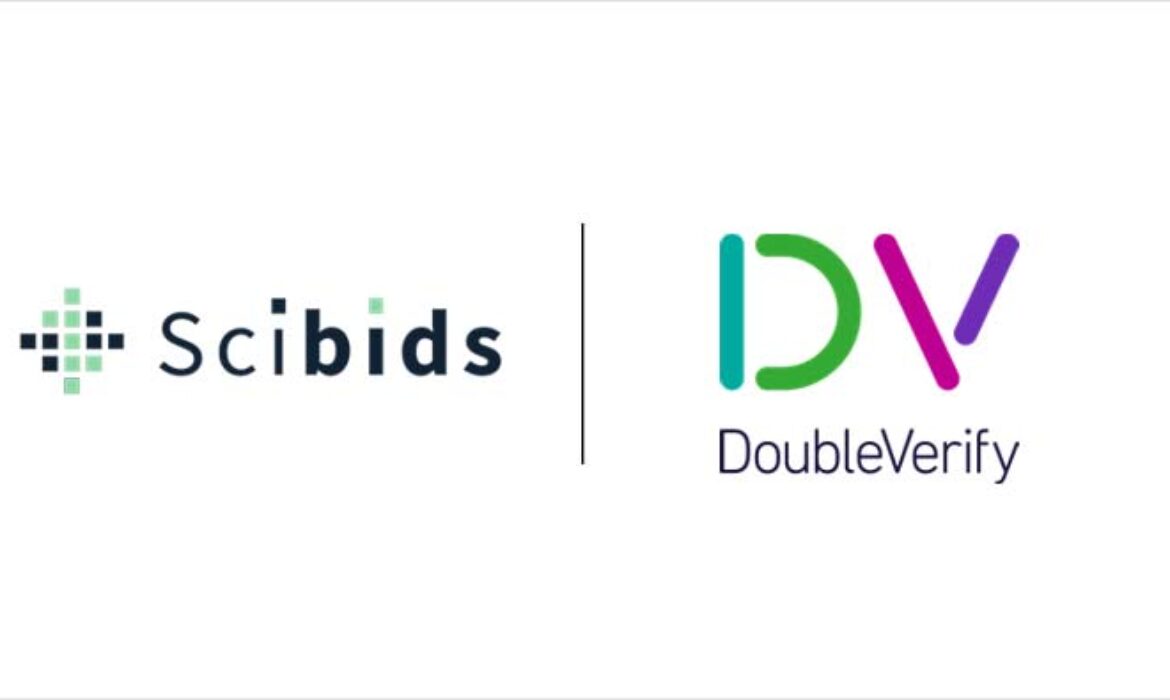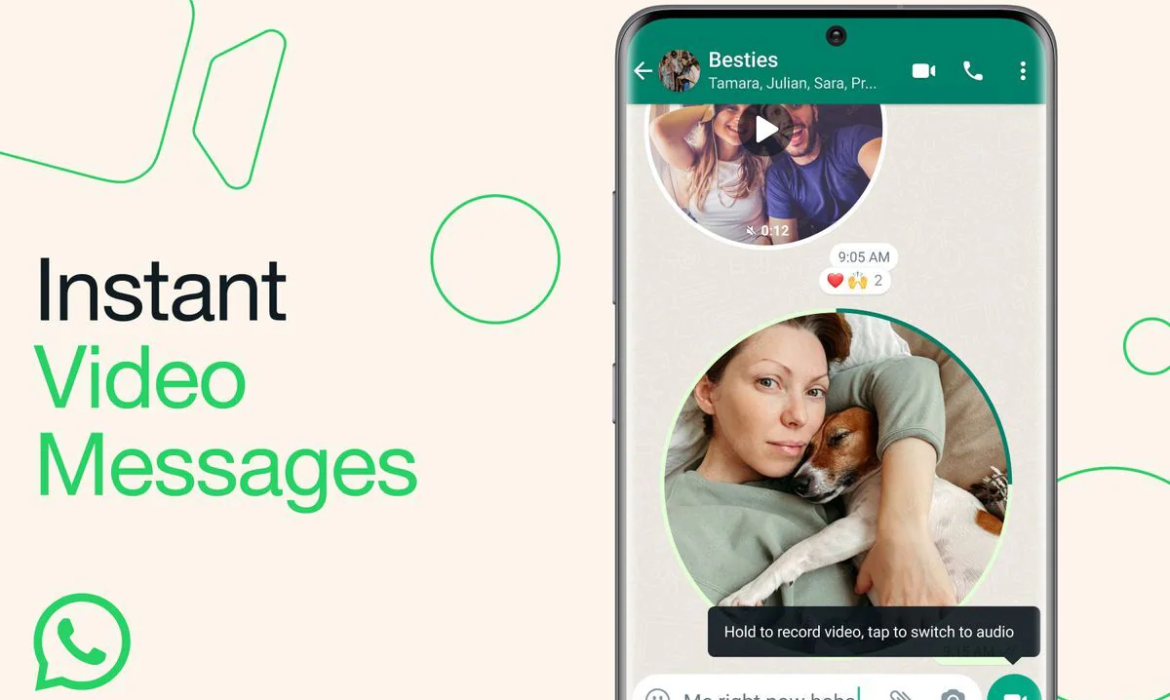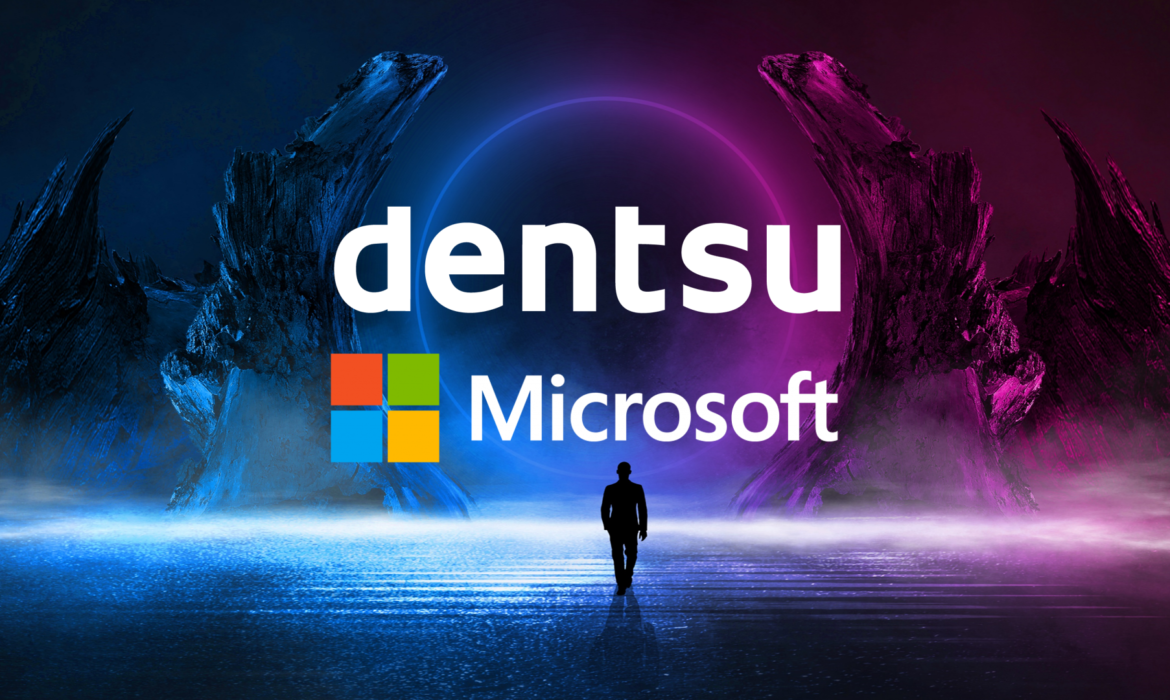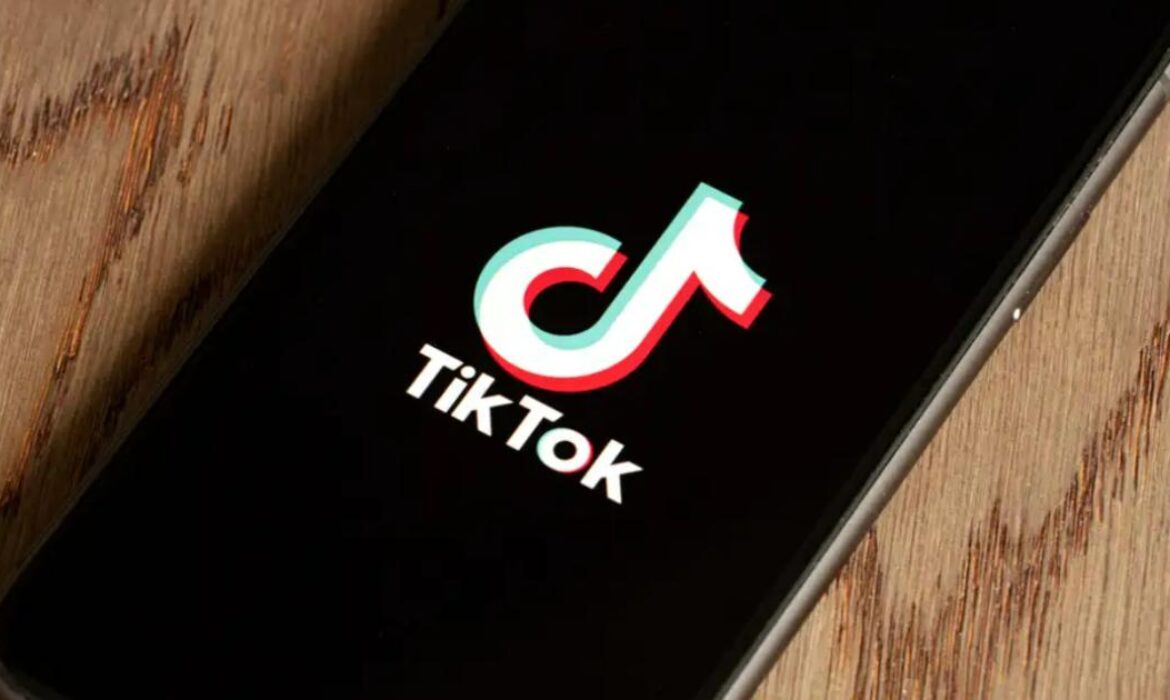Delve In What the Quarterly Results For Big Tech Titans Are Saying
The quarterly results for big tech companies are out. Here are some key takeaways for advertisers and marketers.
Microsoft
Microsoft’s fiscal year has been challenging on many fronts. The acquisition of Xandr, the ad-buying platform, and the increase in search volume revenues failed to produce satisfactory results, making Microsoft miss the mark in Q4. With continuous commitments to investing in artificial intelligence technologies, analysts predicted the quarter to be successful for Microsoft. The company attributed stagnant growth to a decline in advertising spending, which was lower than a quarter on quarter.
Its Talent Solutions contributed to the company’s revenue growth exceeding expectations. Despite the increased revenue, Microsoft reported a reduction in numbers due to low ad spending. The tech giant concluded it was due to marketing solutions decline. LinkedIn’s revenue increased due to growth in Talent solutions. Microsoft Cloud showed promising growth in all of its businesses with improvements in its verticals. Search and news advertising went up with the Xandr acquisition.
By the numbers:
- Revenue was up by 8% increasing to $56.2 billion.
- Advertising and news search revenues up to $86 million, a 3% increase including traffic acquisition cost, 8% increase excluding traffic acquisition cost.
- Azure Cloud revenue growth slowed from 27% to 26%.
- LinkedIn revenue increased by 5%.
- Microsoft Cloud’s quarterly revenue was 21% or $30.3 billion YoY.
Currently, the company is prioritizing developing and spearheading safe generative AI models and practices. Their aim is to help customers use Microsoft Cloud to make the most of their digital resources and drive operations control.
Satya Nadella, Chairman and Chief Executive Officer, Microsoft stated in the Q4 results announcement,
We remain focused on leading the new AI platform shift, helping customers use the Microsoft Cloud to get the most value out of their digital spend, and driving operating leverage.
Amy Hood, Executive Vice President and Chief Financial Officer at Microsoft cited,
Advertising spend was slightly lower than anticipated which impacted Search and News advertising and LinkedIn Marketing Solutions. For LinkedIn, we expect revenue growth in the low to mid-single digits.
She further added,
Even with share gains in our hiring business, growth will continue to be impacted by the overall markets for recruiting and advertising, especially in the technology industry where we have significant exposure.
Meta
Meta produced results in Q2 that exceeded analysts’ expectations. Revenues from advertising rose robustly. The revenue uptick signaled the social giant’s ad business recovery after previous years of gloom and cross-border concerns. Meta cited the increase in DAUs for Reels, the company’s short-form video content app. This attracts 200 billion people to Facebook and Instagram. The app also generated $10 billion annually, which is a $3 billion increase Q/Q.
The company credits the increase in ad revenues to Threads, the text-based app, and continued investment in artificial intelligence. The company ascribed the increase in ad impressions to a heightened focus on TikTok’s rival Reels and AI-driven products as the key factors in the positive outcome. Meta commits to AI advancements and data centers. The CEO has also highlighted AI as the focal point of Meta’s growth strategy. He predicts revenue from AI-powered structures for marketers, AI chat agents, and productivity tools for employees.
By the numbers:
- Revenue up to $32 billion, up 11%.
- Facebook DAUs are 2.06 billion on average, an increase of 5% year over year.
- Facebook’s MAUs of 3.03 billion increased by 3% year-over-year.
- Family daily active people (DAP) 3.07 billion on average, 7% up Yo-Y.
- Family monthly active people (MAP) 3.88 billion and 6% higher Yo-Y.
- Ad impressions in Q2 2023 increased 34% year-over-year and the average price per ad decreased 16% Yo-Y.
Susan Li, Meta’s Chief Financial Officer however stated that their ongoing commitment to invest in Reality Labs, Meta’s unit for metaverse-related initiatives negatively impacted their results. However, it will not hamper their ambition to spearhead metaverse developments.
Mark Zuckerberg, CEO of Meta added,
We had a good quarter. We continue to see strong engagement across our apps and we have the most exciting roadmap I’ve seen in a while with Llama 2, Threads, Reels, new AI products in pipeline, and the launch of Quest 3 this fall.
Alphabet
Alphabet, Google’s parent company overcame its advertising slump in the Q/Q, signaling a return to momentum with favorable results. The revival of their revenue graph was needed to reshape the competitive AI technology landscape. The Q2 results erased concerns about Google losing digital ad prowess to AI advancements on the financial forefront.
The company attributed the overall growth to increasing Google Cloud Services demand, which is anticipated to adopt AI as it advances. The rise in revenues can be traced to costs from YouTube subscriptions and the Pixel family’s content acquisition. YouTube witnessed a surge in stabilized ad spending despite competition from TikTok. Google Cloud revenues were up due to its AI-optimized structure which piqued consumer interest.
By the numbers:
- Revenue was $74.6 billion, up 7%.
- Ad sales rose 3% to $58.1 billion.
- YouTube revenues increased by 4% to $77 billion driven by brand advertising.
- Network advertising revenues were down 5% at $7.9 billion.
- Google Search and other advertising revenues were up 5%, to $42.6 billion.
- Google Cloud revenues are up 28%, at $23.5 billion.
Alphabet is certain that the money needed to finance AI advancements will come from Google’s advertising engine. As such, Google has predicted that it will face more difficulties not only from rivals like ChatGPT, Microsoft, and Bing but also from Amazon’s shopping unit and TikTok and Reddit in trending topics. As part of its efforts to strengthen cybersecurity capabilities, search, and advertising capabilities, the CEO mentioned that AI would be integrated across its product groups.
Sundar Pichai, CEO, said in the announcement,
There’s exciting momentum across our products and the company, which drove strong results this quarter. Our continued leadership in AI and our excellence in engineering and innovation are driving the next evolution of Search and improving all our services.
CFO Ruth Porat commented,
We expect elevated levels of investment in our technical infrastructure, increasing through 2023 and continuing in 2024. The primary driver is to support AI opportunities across Alphabet, including investments in GPUs and proprietary TPUs, as well as data center capacity. With all that said, we remain committed to durably re-engineering our cost base to help create capacity for these investments in support of long-term, sustainable financial value.
Amazon
Amazon released its second-quarter earnings, and the numbers were impressive. According to CEO Andy Jassy, Amazon saw developments in areas they had been steadily advancing in for the past quarters. The e-commerce giant attributes its revenue growth to the rise in price points, selections, and convenience available to its consumers. Amazon continues to see strong demand for everyday essentials, positive feedback from customers, and updates to its website, mobile apps, and customizations.
AWS growth stabilized in Q2. Moreover, it continues to grow with customers, partner networks, functionality, and operational presentation. AWS revenues were twice as high as any other provider. Amazon is constantly working to further AWS technologies and features to aid customers in leveraging generative AI, productivity, and security. Ad revenue increased due to performance-based advertising efforts, improved customer relevance of ads, and ML benefits to understand ROI and ad spending for brands.
By the numbers:
- $134.4 billion revenue, an increase of 11% Y-o-Y vs estimates of $131.5 billion by Refinitiv analysts.
- Advertising revenue is up 22% Yo-o-Y, to $10.68 billion.
- AWS sales revenue growth of 12% Yo-Y to $22.1 billion.
- Subscription service revenues including Prime memberships were up 14%, at $9.8 billion.
Amazon is currently working on enhancing Machine Learning models to help marketers access audiences that were difficult to reach with Amazon ads. During an AWS event in New York, Amazon also committed to enhancing generative AI-powered applications with the latest and improved pre-trained large language models (LLMs).
CEO Andy Jassy mentioned in the earnings call,
As the economy has been uncertain over the last year, AWS customers have needed assistance cost optimizing to withstand this challenging time. They have also needed assistance reallocating spending to new initiatives that better drive growth. We’ve proactively helped customers do this.
Apple
Apple reported their results for the third quarter that were better than their expectations, however, revenue was down Yo-Y. The company attributed the growth in its revenue to healthy iPhone sales across the world. Apple set an all-time high record for services revenues, including advertising, the app store, and music, exceeding its predictions. The slump in iPad sales revenue was accredited to the iPad Air launch in the prior year. They continue to invest in product enhancements to encourage customer satisfaction which was reported to be 98% across the U.S.
By the numbers:
- Revenue was $81.8 billion, down 1% Yo-Y.
- iPhone revenues are $39.7 down 2% Y-o-Y.
- $6.8 billion, down 7%, for Mac.
- iPad $5.6 billion, down 20%.
- Wearables home, and accessories revenues were $8.3 billion up 2% with expectations.
- Services revenue $21.2 acceleration of 8%.
Apple is releasing its most ambitious and advanced personal electronic device, the Apple Vision Pro early next year for ordinary consumers. It is currently only available to advertisers, content creators, etc for demo purposes and has received stellar reviews.
AI and machine learning will continue to be an integral part of product design. Apple is planning to introduce AI and ML-powered live voicemail in iOS 17. They have also invested in research into generative AI and continue to responsibly enhance their products with these technologies. This is with the goal of enriching people’s lives.
Tim Cook, Apple’s CEO said,
We are happy to report that we had an all-time revenue record in Services during the June quarter, driven by over 1 billion paid subscriptions, and we saw continued strength in emerging markets thanks to robust sales of iPhone. From education to the environment, we are continuing to advance our values, while championing innovation that enriches the lives of our customers and leaves the world better than we found it.
Luca Maestri, Apple’s CFO, further remarked,
Our June quarter year-over-year business performance improved from the March quarter, and our installed base of active devices reached an all-time high in every geographic segment.
Snapchat.INC
Snapchat reported its quarterly results and they were mixed. Although revenue was up Q/Q, it still saw a Yo-Y dip. Just like its competitors, Snapchat is grappling with a slump in advertising revenues. Snapchat also introduced an exciting and innovative AI feature a few months back to keep the platform happening and engaged. My AI, Snapchat’s AI chatbot is now integrated into group chats, recommendations, and ‘Lens’ suggestions.
By the numbers:
- Revenue was $1,068 million compared to $1,111 million the previous year
- DAUs 397 million, an increase of 50 million or 14% Yo-Y
- 4 million global users for paid subscriptions introduced in the previous year
This quarter, the social media company pledged to improve advertisers’ expectations through machine learning technology. It will do so to upgrade its framework, find creative approaches to measuring and optimizing ad spending, and encourage new leadership. Its continuous investment in ML infrastructure has improved company ranking and content personalization.
Snapchat believes that it will face healthy community growth in the next quarter with expected DAU increases of 405 to 406 million.
Evan Spiegel, Snapchat’s CEO said,
We are excited by the progress we have made delivering increased return on investment for our advertising partners, growing our community to 397 million daily active users, and reaching more than 4 million Snapchat+ subscribers.
Omnicom Media Group
Omnicom Media Group ended its second quarter of 2023 on a high note. The organic growth rate was up 3.4% compared to the previous quarter’s results, placing it within its projected range. Omnicom spearheads generative AI developments in the media business. Their ongoing strategic alliances with companies like Adobe, AWS (Amazon Web Services), and Microsoft help them do this.
The business has also promised to invest in media sales capabilities, environmentally friendly technology, and data from first parties. They are currently realigning their staff to match strategy choices and outlook.
By the numbers:
- 3.4% organic revenue growth in Q2 23, with $3,609.9 million revenue
- Advertising Media revenue growth was 4.2%, while organic growth grew by 5.1%
- Third-party costs which include supplier costs the company incurs when providing services to clients increased to $86.8 million
- Organic growth rate for Public Relations was up 0.1%, while execution & support decreased by 3.8%
John Wren, Chairman and CEO of Omnicom said in the announcement,
While the balance of the year will continue to see economic uncertainty, we are entering a dynamic and exciting new era for our company. Omnicom has secure leading positions in generative AI technologies and partnerships to deliver on our promise to achieve the best outcome for our clients and increase the operational efficiency of our company.
eBay
EBay has exceeded Wall Street’s expectations in all key metrics and delivered positive results. However, the marketplace’s weakened momentum among active buyers was worrying. Gross merchandise sales decreased also recorded.
In spite of this, the e-commerce marketplace believes that its increasing focus on AI integration into its platform will drive further user momentum. The company currently prioritizes laying a strong foundation for generative AI tools across the website to aid marketers and product listers.
By the numbers:
- Revenue was up to $2.51 billion, an increase of 5% from the previous year
- Advertising revenues were $367 million, up 33.5% Yo-Y.
- Promoted Listings revenue was up 47%, reporting $341 million
- The active buyer base declined by 4%
In the next five years, eBay plans to implement AI enhancements in every part of its organization. They are constantly integrating generative AI features into their site. They are also working towards reinventing the e-commerce landscape. Its work has already produced stellar results and hopes to deliver long-term results.
Jamie Iannone, CEO said,
The foundational work we’ve accomplished over the past 3 years has set us up for a new phase of innovation. Our teams are focused on thinking bigger and moving faster as we build game-changing features and functionality for customers to keep eBay at the forefront of eCommerce.
Read More: Advertise Your Brand in the Metaverse: The Future of Digital Advertising
Google’s Triple Treat- Unleashes a Trio of Updates to Elevate User Experience
Google is embracing the future of greatness. Three game-changing changes from the tech superpower will revolutionize user experience across platforms. These updates, which range from enhanced usability to seamless disruptive capabilities, will enhance user journeys to a higher level. This article explores in detail these innovative improvements that will affect our online life.
Generative Search Experience Update
The AI-generated answers in Google’s latest search generative experience can now display playable videos in addition to photos. Google stated in their blog, “With our generative AI-powered Search experience (SGE) you can quickly get up to speed on a new topic, uncover quick tips for your specific questions or discover products and things to consider.” Google has included generative AI in its search engine so that users can benefit from it. The upgrades that will simplify your life are listed below.
Enjoy images and videos with your searches
It’s been said that seeing something for oneself helps one grasp it better. Google recently added images and videos to its search results, and individuals who have joined Google Labs will soon be able to access the upgrade. As a result, when someone queries something, it returns relevant material including photographs and YouTube videos in addition to a text description. For instance, if consumers look up how to remove stains from marble, they can easily find guidance and pertinent material online.
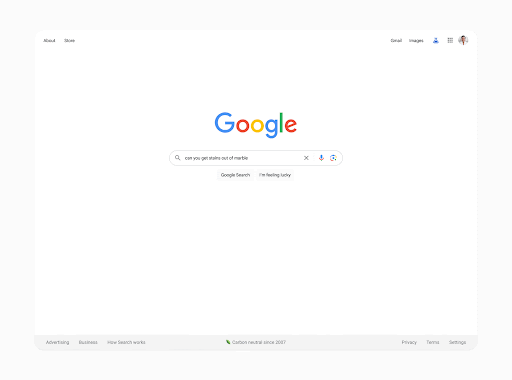
Credit: Google
Amplify Curiosity
Users can search the web for useful information when particular topics pique their attention. Google offers them relevant links to aid in their search results along with an AI overview. Additionally, each link on the website has the published date attached, and they are constantly working to improve the AI model.
Turbocharge your insights
Google recently revealed significant speed improvements that cut AI snapshot time in half.
Google AI updates indicate the sources it has accessed information from, setting it apart from rival AI chatbots like ChatGPT. It is useful to cite and refer to links when researching.
Doesn’t it all sound cool? But wait, there’s more!
Mobile Lookup Updates
In order to improve users’ search experiences on the Google mobile browser, Google has unveiled additional updates. With expanded search concepts, popular and trending topics and themes, and other improvements, searching is now simpler.
Google’s Search Serenades
Google now provides search suggestions pertinent to the website the user is currently browsing. “Related to this page” is the feature’s name, and it offers consumers additional options to look through.
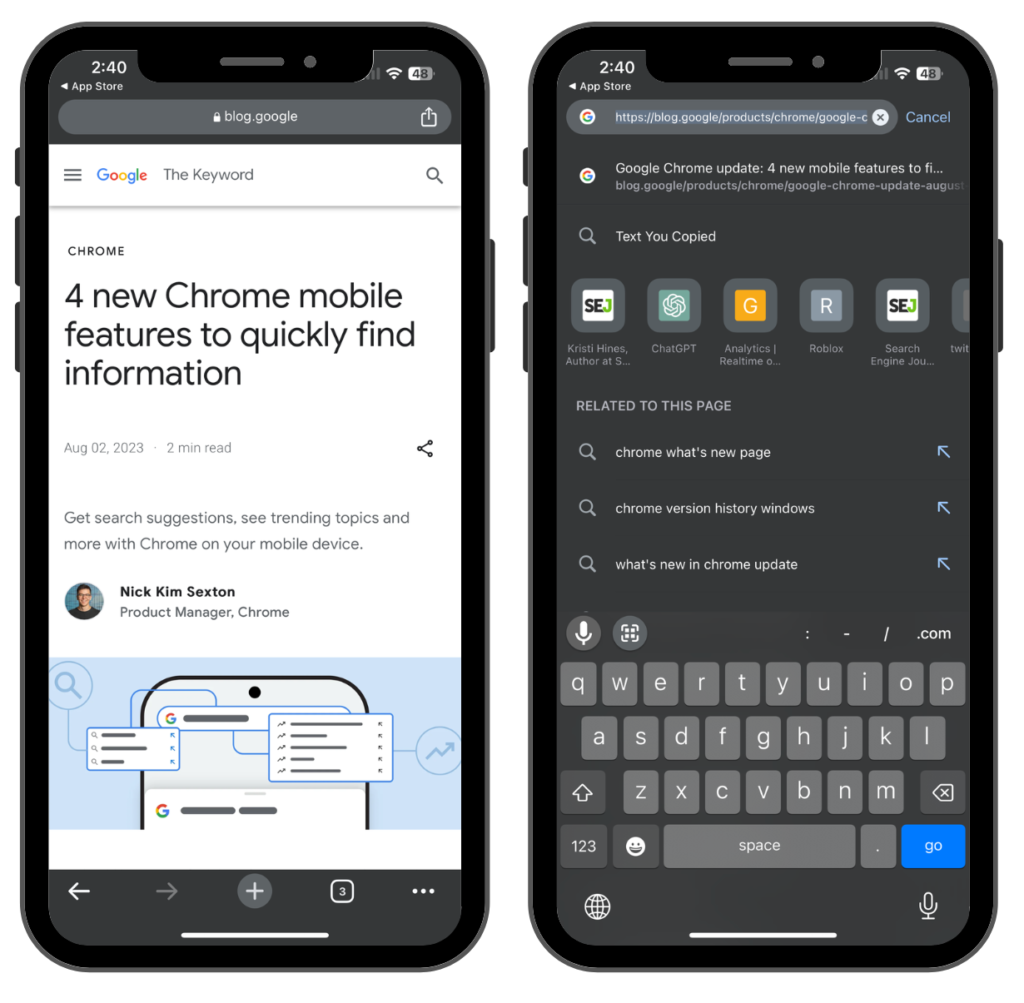
Image Credit- Search Engine Journal
The Google Trendspotting journey
The upgrade also makes it easier for users to access address bar-based trending topics and searches. The iOS version of this feature will be released later this year, but it is only available in the Chrome browser for Android.
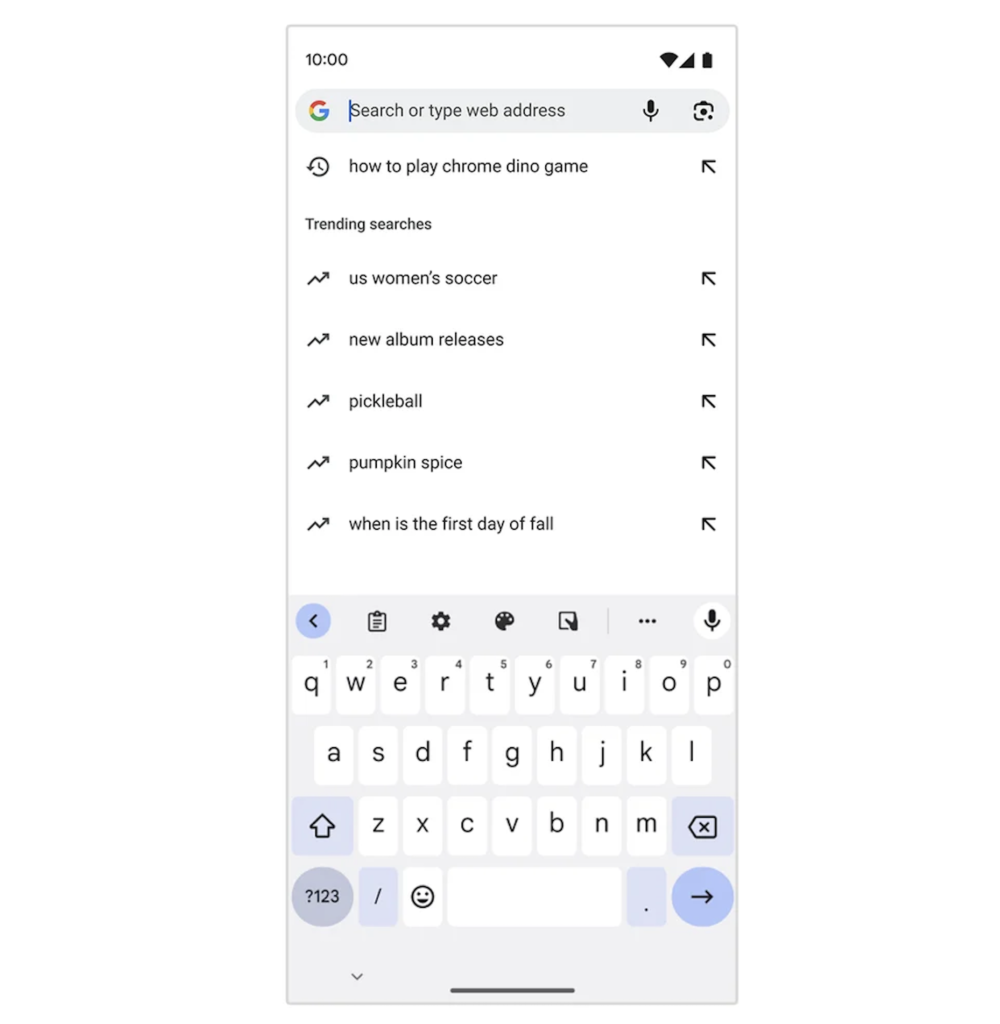
Image Credit- Google
Search for similar terms
Users may now search for a word or term immediately from the page they are currently viewing thanks to Google’s touch-to-search upgrade. This was introduced a few years ago on Android. Now that the tool has been updated, they can use it to get relevant search results. For instance, the user can select a word and learn more about it. This is if they are reading about a subject and come across a term that interests them.
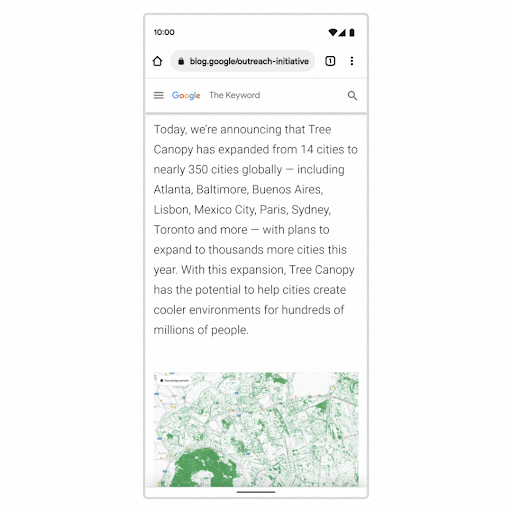
Credit: Google
Intensify your search
In addition, users will be able to view 10 queries rather than just six suggestions to improve their search experience. The first results will be those most pertinent to the search query. After that, visitors may scroll down to search for further possibilities.
Google Analytics 4 Updates
Google has released several enhanced capabilities on the Google Analytics 4 platform. These capabilities are aimed at improving campaign optimization and helping advertisers better understand user behavior patterns. The upgrade offers enhanced metrics, particularly for iOS campaigns, and a deeper look at targeting tools and performance uplift possibilities. This is how app marketers will benefit:
Audience tools
Unnotified audience suggestions
This tool will help untap the audience of the current app to target those users who are not reachable via push notifications. Only 37% of users enable push notifications, according to Google, meaning brands are missing out. This technology allows marketers to interact with users when they download apps
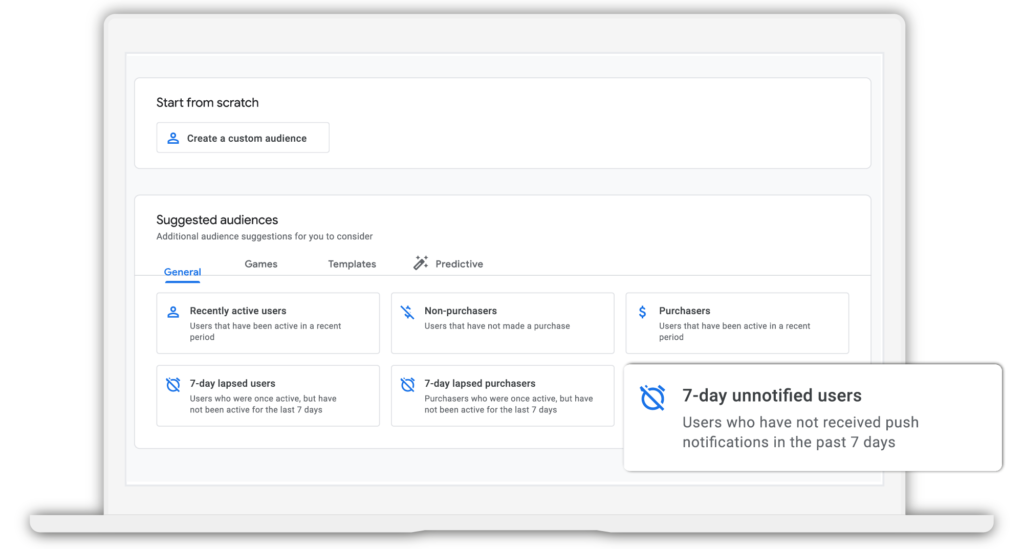
Image Credit- Google
Relevant app users
Google will automatically identify the most appropriate app consumers for the app engagement promotion if the advertisers have set up a demographic in GA4 for both app and web users.
GA4 Audience Builder in Google Ads
Google will offer the option to create effective GA4 audiences directly in Google Ads during ad campaign setup in the upcoming weeks.
Improved performance
App marketers may automatically enhance app campaign metrics using consented, signed-in data. Google’s experimentation analysis shows that app campaigns generated 10% higher conversions for every dollar spent. Through the GA4 property, advertisers can activate Google Signals to make them available.
Improved marketing optimization for iOS
In order to help marketers better understand the efficacy and measurement of their iOS initiatives, GA4 makes privacy-centric solutions possible. This is how-
- To enhance multichannel reporting and inference, GA4’s feature enables app integration with SKadNetwork. Additionally, it offers a tool for setting up the SKadNetwork so that conversion data is gathered without identifying information escaping the user’s device.
- By including a consenting user’s phone number as a sign-in method, advertisers can optimize their campaigns more effectively.
- With geo-targeted conversion lift measurement, advertisers can now measure iOS app advertisements’ gradual effects with increased accuracy.
With these innovative enhancements, Google simplifies the user experience and puts every search, trend, and recommendation at our fingertips. With these modifications, the tech giant is becoming more empowered, perceptive, and motivating. Only exciting times lay ahead for the users as Google keeps expanding and experimenting with technology to stay relevant in the ever-evolving landscape.
Read More: Google Ads Enhances CTV Advertising
Disney+ Hotstar Amp Brand Outreach With CTV Targeting
For South Asian nations, including India, cricket is a profound enigma. As a result, cricket enthusiasts are in for an adrenaline rush next month as the major tournaments kick off. The ODI World Cup this year will be the ideal venue for companies to partake in both festive ecstasy and cricketing enthusiasm. As the holiday season approaches and these prominent tournaments are taking place, businesses have the perfect opportunity to take advantage. Brands can now leave their imprint by engaging with consumers in creative ways thanks to Connected TV (CTV) targeting.
A CTV Recap
As a part of programmatic advertising, CTV has risen to popularity in recent years. To explain CTV in short, simple terms, it is any device that can be connected to your traditional TV set, like a Smart TV. It offers online viewing and streaming experience via the internet. These ad formats are very cost-effective, easily trackable, and safe for brands. As such, they also offer a broadcast-quality experience. In a report by Exchange4Media, and a survey by Statista, the CTV advertising market is expected to grow by $45 billion by 2025.
CTV expansion is responsible for India’s rising content consumption. As a result, Disney+ Hotstar, the largest OTT platform in the nation, leads the curve. Disney in India has revealed that users can stream the Asia Cup and the Men’s Cricket World Cup on their mobile devices for free. In a statement, the company stated, “The move to lift the paywall for mobile-only viewers is aimed at further democratizing the game of cricket and making it accessible to as many mobile users in India as possible for the duration of the season.”
How will it benefit Advertisers?
CTV offers shared viewing. During peak sports tournaments like the Men’s Cricket World Cup or the FIFA World Cup, spectator emotions are high. This results in heightened emotional responses to the ads they are subjected to at that time. Disney+ Hotstar offers a subscription video-on-demand viewing experience. During live events like these sport world cups, Disney+ Hotstar switches to a hybrid model where, during commercial breaks, they display ad campaigns from brands. Viewers are also shown ads on their screens while live streaming the sports content, however, the ad does not cover the entire screen like traditional TV. They can access the brand’s website without disrupting their streaming experience. Here’s how it will help brands in their outreach strategies with Disney+ Hotstar
Brand Reach
As CTV popularity grows in India, more brands opt for CTV advertising. Disney+ Hotstar has a wide audience base in India. As such, the platform’s track record of offering the highest CTV results, brands are excited to collaborate with them in the upcoming cricket season. By combining their first-party data with the streaming platform, they will receive perceptive insights about their target audiences while controlling ad frequency and reach. This will help them understand how and when their ads are to be displayed so they reach the right cohort.
Audience targeting
Brands will be able to efficiently identify where and how the Disney+ Hotstar audience streams with first-party data. This will help them cater their ads according to not only the audience but the location as well so that they resonate with the population better. Advertisers will also be able to measure the campaign’s efficacy.
User actions
While streaming events like cricket or other sports, audiences are not constantly inundated with commercials. Hence, there is a high chance that viewers will watch the entire ad without skipping it. For the upcoming cricket season, Disney+ Hotstar has introduced video and display billboard ads. This will work in favor of the brands as audiences are more likely to remember the brand resulting in high brand recognition and loyalty. Although viewers might not convert into customers immediately, they will have gained a worthy prospect.
Cost-Friendly
CTV advertising is cost-effective for brands. This is because CTV ad format reaches only a single individual device according to the brand’s targeting campaign. It is unlike traditional TV advertising where viewers are subjected to the same ad around the network. Brands will be able to manage their cost per impression thanks to this ad format. At the same time, advertisers will be able to produce high quality, high performance, and targeted ads. Brands will benefit from this as the audience is more likely to respond positively to better quality ads, increasing loyalty and visibility. Advertisers with niche audiences will also enjoy a better ROI while eliminating any extra costs that might otherwise occur.
Disney+ Hotstar and CTV
Disney+ Hotstar is known for its sophisticated targeting capabilities. Therefore, this cricketing season offers marketers a fantastic chance to succeed with audience involvement. They ran 47 campaigns ICC T20 World Cup in 2022. The results can be used to measure the efficacy of their CTV advertising campaign. The analysis provides insightful information on how sports advertising affects brand visibility. Here are some of the analysis’s major takeaways.
By the numbers
The campaign delivered 25% higher results than the industry benchmark
- Sponsor brands were twice as high as inventory buyers.
- Brands with investments over Rs. 5 crores saw two times more impact on awareness and favorability
- Brands with supplementary campaigns like branded cards, billboards, etc. witnessed 1.5x and 2x higher impact on awareness and favorability respectively.
With Disney+ Hotstar, a number of brands have already found success, and they are grateful for the platform’s assistance in reaching previously untapped audiences.
Read More: PubMatic Takes On DSPs in Video & CTV Deals, Aims for Direct Access
Lemon8, TikTok’s sister app struggles in the US, users cite inorganic feel and influencer bias
Lemon8, the sister app of TikTok by ByteDance started off positively. Thanks to TikTok’s reach and success in the international market, it became widely popular. But like every new app launched, Lemon8 too has become saturated for a very good reason. While U.S. lawmakers were debating on a ban on TikTok earlier this year, parent company ByteDance was quietly preparing the launch of its social media app Lemon8.
TikTokers were excited about the latest platform, and the app downloads skyrocketed placing the app at #2 in the App Store in the U.S. Before we dive into what issues that app is facing, here is a brief description of Lemon8 for those who have never heard of it.
Lemon8, what is it?
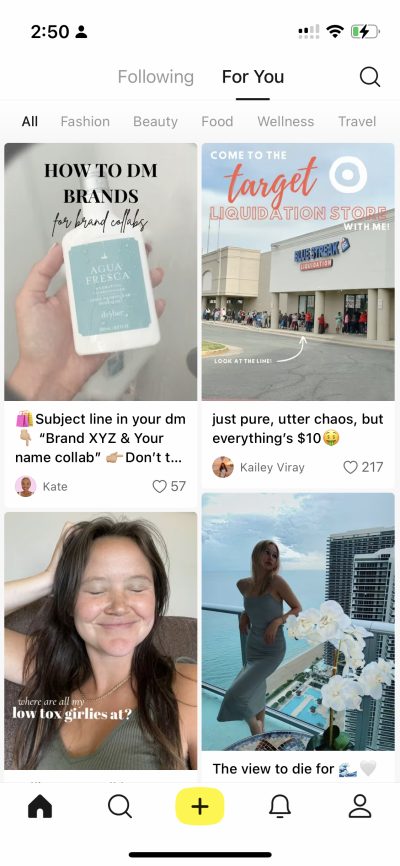
Image credit- Rest of World
Lemon8 is a social media platform, best known for fusing Instagram and Pinterest. A lifestyle-based app, it allows content creators to share photos and videos curated around a specific topic. Initially launched in Japan in 2020, it quickly gained traction before reaching its peak popularity in the western markets three years later. The app features a main side-by-side vertical feed where users can post images and videos and decorate them with in-app templates. The platform broke the barriers between audiences and influencers with its feature that allowed creators to tag their posts with product details, links, and price breakdowns.
Specifically designed with the younger Gen Z audience in mind, the app is more about aesthetics and DIY tips, unlike other social media spaces. Food, wellness, fashion, beauty, home, travel, and productivity are the seven content categories. Under each topic, one can find recommendations, video tutorials, and perfectly crafted content that appeals to the eye.
But as the initial hype died down, like any other newly launched application, users faced problems with the app. Lemon8’s popularity tanked and since then, its DAUs have nearly halved from 11,930 to 6,360.
Users say Lemon8’s algorithm lacks the magic of its sister app TikTok: “I mostly get bible content from religious people and weight loss tips, and I’m not interested in either of those”https://t.co/GlSBCKlS1k
— Rest of World (@restofworld) July 19, 2023
Aesthetically curated or just a gimmick?
Lemon8, launched as a follow-up app for TikTok, flopped in the U.S. Users complain that the app is too pretty and well-curated to the point of feeling fake. Here are some problems users feel need to be addressed
- The app feels inorganic and well-manicured
- It focuses more on influencers’ needs rather than ordinary users
- Feed crafted to blandness
- Feels like an app created for creators, by creators
- Ordinary users feel left out
- Algorithm lacks gauging user preferences and keeps showing recommendations that users were not interested in.
- App does not support sharing external links, making it difficult to build a brand on social media.
- Everything was well presented and well-crafted when users refreshed their feed
- Users complained of declining engagement
The app sets unrealistic standards and idealizes lifestyles. One user commented that the app reminded her of Pinterest in its early days when it was just “white girls” who posted about their lifestyles. The app is filled with topics like “The time I realized skinny privilege is real”, “Hot Girl Lunch Ideas” and more.
Another user pointed out that niche topics like dark academia, or cottagecore did not gain as much traction as conventional topics did. The user also mentioned that the app did not feel ready to have a real-world conversation. Lemon8 is also recruiting lifestyle influencers to collaborate with them on a paid partnership. In return, the creators are promised exposure and guidance. One of the ads posted by the platform stated that they were looking for “U.S. based women aged 18-25, and had an ‘It Girl’ aesthetic with a background in creating ‘high quality’ beauty and fashion content.
A Chinese app rip off?
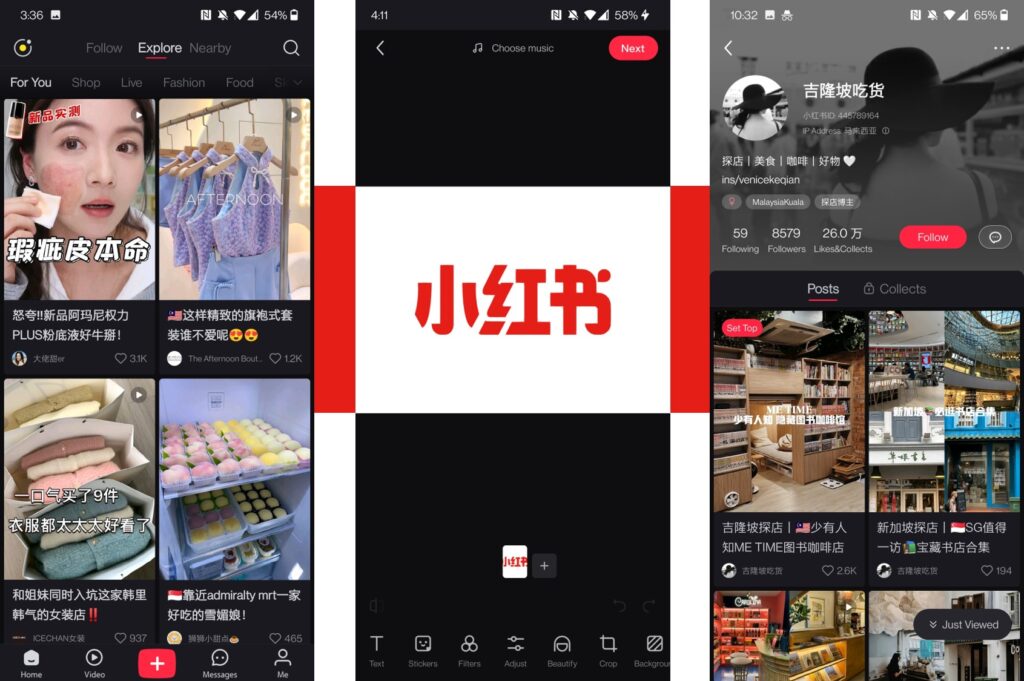
Image Credit- First Com Academy
Lemon8 is a replica of the Chinese social media giant and e-commerce platform called “XiaoHongShu” which literally translates to a “Little Red Book.” It has been deemed the “lifestyle bible” and hosts more than 200 million monthly active users. In simple terms, it can be described as China’s own Instagram. The platform targets women in their 20s and 30s from first and second-tier Chinese cities. Thus, women belong to affluent families with higher spending capacity. The female-to-male ratio on the app is 8:1 (88.8% of females and 11.1% of males).
Users share their lifestyles, shopping experiences, and other content in the form of photos, videos, texts, and live streams. Content can range from beauty and cosmetics to food, fashion, travel, fitness, entertainment, etc. Social features allow users to discover the latest brands. It is immensely popular among beauty and fashion brands like Chanel and Dior.
ByteDance saw the absence of such a platform on the global market as an opportunity to replicate XiaoHongShu’s domestic success. Therefore, they launched an “overseas Little Red Book” Lemon8 in the hopes of capitalizing on TikTok’s reach and success.
Our thoughts
In their optimism about imitating a widely successful app, ByteDance, and Lemon8 failed to consider the drawbacks. XiaoHongShu users also complained that the app set unrealistic standards for women’s beauty and wellness. Over in the US, its adversary faces similar problems. When one opens Lemon8, the very first thing that runs through the mind is that it is filled with clickbait-ish content, including how to lose weight in 40 days, apps to get free products from any brand, etc.
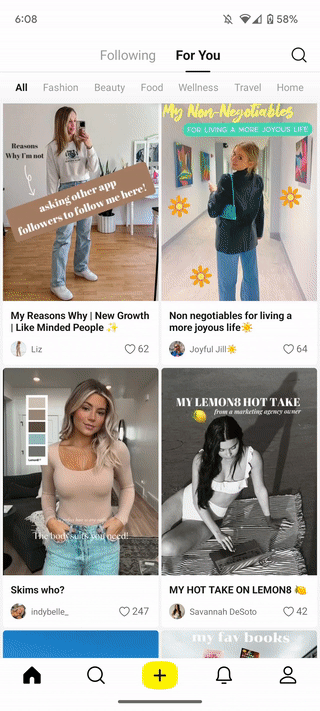
Video credit- DreamlikeDiana
In addition, the app was full of white women between the ages of 20 and 30. They promoted beauty, Christianity-related posts, and high fashion, which not many users can relate to. This in many ways contrasts with the ongoing body positivity initiative that encourages women to feel comfortable in their own skin. As there are no brands allowed on Lemon8, it is impossible to convince people to make a purchase. Despite losing active users, ByteDance is still promoting the app to increase outreach, and posting upcoming job listings as well.
Lastly, the app lacks inclusivity. Lemon8 is women-dominated with next to zero male audience. It is highly likely that Lemon8, which is also owned by a Chinese company, will be banned like TikTok.
All in all, like every new app, Lemon8 too has had its fair share of fame, is becoming less and less relevant to its audience. It has come to this point also because the platform has not taken any plausible action to convert targets into users. The app feels like a space with pretty content, but not relatable. Users have mentioned giving it a try again, if and only if the platform brings changes to make it more than what it already is.
What do you think is the future of this obsolete social media app?
Read More: TikTok Gets More Visual, Launches ‘Interactive Add Ons’ For In-Feed Ads
Meta Adopts Consent Policy for Targeted Ads Data in Europe
Meta, the parent organization of Facebook and Instagram, agreed to obtain user consent before acquiring private information in Europe. The business announced in a blog post that it intended to change the legal basis for its operations in the EU, EEA (European Economic Area), and Switzerland from “Legitimate Interest” to “Consent.” These changes will be incorporated in October. Meta’s ad space might be impacted. The platform will still allow marketers to run specialized and targeted advertising campaigns across Europe, thanks to Meta’s assurance.
The internet powerhouse and the EU have been at odds for a year. Meta says these adjustments were made to keep up with the Irish Data Protection Commission’s growing and shifting regulatory requirements. Meta manages its European activities through the IDPC, which oversees EU data regulations.
According to Meta’s blog post,
There is no immediate impact to our services in the region. Once this change is in place, advertisers will still be able to run personalized advertising campaigns to reach potential customers and grow their businesses. We have factored this change into our business outlook and related public disclosure made to date.
The move comes as a salvation for Meta
The EU penalized numerous large digital companies, including Meta, for their ethical and business practices. Due to the strict requirements of GDPR regarding data privacy, this has affected their targeted advertising methods. Meta wouldn’t be able to analyze users’ preferences and behavioral patterns if many users refused to let Meta capture their data. It would be difficult to establish an audience for targeted advertising, which would undermine their ad operations. Because of this, advertisers can decide not to use the platform, which reduces profit from ad space.
Users in Europe have been eagerly awaiting Meta’s intention to request their permission. After a lengthy conversation with the IDPC, whereby valuable advice was provided, the company advised changing its privacy policy to comply with EU standards. More information will be released in the upcoming months as Meta works productively and closely with regulators.
Estimated timeline
Meta says these adjustments, may require at least three months. It claims that getting consent will be a challenge. As a result, in October the company will begin gathering data from users throughout Europe. But Meta has suggested that it will hold off until an update to its policies is in compliance with any modifications made by EU regulators. The exact timeline is to be confirmed.
Why is it so critical for Meta?
Users of Facebook and Instagram can currently only set default permissions in Meta so that data can be collected to make money from targeted advertisements. Furthermore, EU data regulators previously rejected Meta’s claims that the “Legitimate Interest” justification for collecting users’ personal data was valid.
Meta will maintain compliance with governing bodies’ regulations and promote transparency in its data handling methods with upgrades addressing privacy issues. However, the pioneering Digital Marketer’s Act of the EU, which forbids internet doorkeepers from engaging in anti-competitive behavior, is likely to have some consequences.
Meta may breathe a sigh of relief with the upgrades to their privacy policies. The tech company is yet to launch Threads, their text-based app, in Europe. After a year of conflict with the regulatory authority, they are now able to cater to their European audiences.
Read More: Meta Slams Apple Over ATT, Google Hit By Second U.K Anti Trust Investigation
DoubleVerify Acquires Scibids, Reinforces AI Powered Solutions
A strategic partnership between DoubleVerify (DV), the market leader in multimedia analysis and data collection, and Scibids Technology SAS has been disclosed. In terms of optimizing digital campaigns using AI, the latter is at the forefront. The $125 million purchase agreement comprises both cash and stock trades. The acquisition is expected to be finalized in quarter three of 2023. In the world of advertising, DV has a solid reputation for being open and reliable. The collaboration may be viewed as a union of two top platforms. Each gives marketers reliable information and AI to help them make the most of their digital endeavors.
Mark Zagorski, CEO of DoubleVerify stated in the announcement,
The acquisition of Scibids is a decisive step in our journey to power superior campaign outcomes that started with developing and delivering the industry standard in media quality insights and has evolved into putting that data t work for advertisers.
He further commented,
The combination marries DV’s proprietary data with Scibids’ AI-powered optimization technology, letting us empower brands with unparalleled insights and control over their advertising performance
An AI-powered acquisition
With Scibids’ AI technology and real-time algorithm optimization, the DV-Scibids alliance aims to bring together the most trustworthy media and performance metrics from the former. The agreement will be the first to give DV the ability to conduct an entire media transaction, from inception through analysis. Additionally, it will give marketers immediate marketing results without third-party cookies. DV’s move from performance proxies to KPIs for advertising will produce real-world business results in line with advertisers’ objectives.
Remi Lemonnier, CEO & Co-Founder of Scibids remarked in his statement,
This partnership will amplify the capabilities of our customizable AI technology and expand its impact across the digital advertising ecosystem to strengthen the open web.
Scibids Technology SAS is a pioneer in the use of AI to drive marketing strategies. They are well-known for developing artificial intelligence technology that supports marketers’ decision-making for programmatic digital ad campaigns by automating and improving it. The company boasts high profile clients like Allianz, Dell and Spotify.
What’s in it for DoubleVerify?
The buyout offers DV several advantages. All targeted programmatic ad campaigns will benefit from multimodal dynamic efficiency measurement. There will also be benefits in the area of optimization. According to the agreement, DV will incorporate Scibids’ AI technology into its media quality at the point of impression, followed by performance indicators Automating bidding among top DSPs will also simplify manual processes and foster cost savings for DV.
DV had previously revealed an intriguing, workable agreement with Scibids for the launch of the Algorithmic Optimizer. This innovative technology would leverage tailored artificial intelligence to improve attention metrics. During Fortune 500 campaign tests, the tool reportedly increased attention levels by 63% and impressions by 95%.
In this ever-evolving landscape, companies rush to harness the power of AI and embrace innovation. The industry is reaffirming safe practices despite AI dominance. All eyes are turning to this partnership to see how it elevates the advertising landscape.
Read More: DoubleVerify Launches New Attention Lab For Advertisers
WhatsApp Introduces Real-Time Video Messages in Global Rollout
WhatsApp transformed voice messages communication. It made people’s lives easier by sharing voice messages quickly and safely. And now, Meta-owned WhatsApp has released a brand-new app version. Users may now send and receive brief video messages in their chats thanks to the newly added capability. Meta CEO Mark Zuckerberg announced about the update in his latest post on Facebook.
What’s so different?
The ability to send real-time video communications with a 60 second time constraint distinguishes this function from others. End-to-end encryption is used in the functionality, which is like voice messaging in privacy protection. According to a statement made by the app platform, the rollout is currently accessible to beta testers and will soon be available globally. The function is still available to those that manually download the latest version app from the Play Store or App Store.
sometimes you just have to see it to believe it 👀 now you can capture the moment right when it happens with a Video Message. pic.twitter.com/QiDTRhRRJ6
— WhatsApp (@WhatsApp) July 27, 2023
WhatsApp asserts that the inability to edit, amend, or forward video messages makes them distinctive. The platform maintains that these communications are always genuine and sincere. In other words, a video message sent to you is intended only for you and no one else.
How can one send video messages?
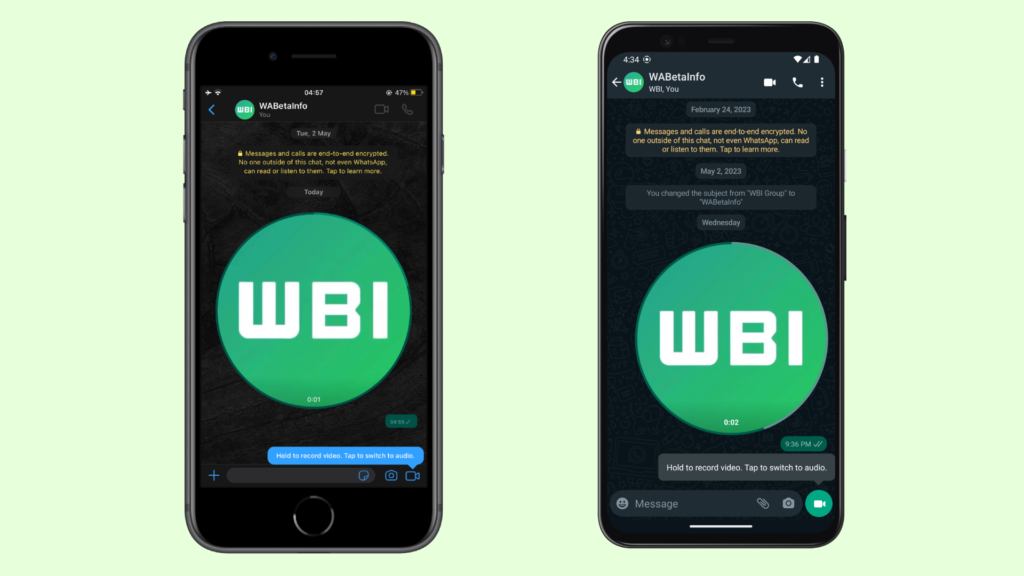
Image Credit: WhatsApp Beta Info
- Open WhatsApp and open the chat you want to send the video message to
- Tap on the icon at the bottom right to switch from microphone to video mode
- Record your video and send it to your intended recipient
- For hands free mode, swipe up to lock and record just like for voice messages.
When the user opens the chat, the message will continue to play without sound. Only when they tap on the video will the sound be turned on. The application has always had video options available. But now that it has this upgraded capability, the procedure is much easier.
WhatsApp Updates
WhatsApp users can now block incoming calls thanks to the latest feature. They are able to revise their messages within 15 minutes of sending them thanks to another update. WhatsApp is working on another update that will allow platform users to select usernames.
More about Meta
The rollout announcement follows Meta’s stellar Q2 2023 performance results. Thanks to their expertise in artificial intelligence, Meta has increased revenue while expanding their advertising reach. The Facebook-parent firm also just debuted Threads, a text-based social network, which set records for sign-ups. They have also concentrated on increasing AI capabilities.
With this addition to WhatsApp, their most popular messaging service, Meta intends to enable users to establish a quick and smooth connection that brings people together regardless of distance.
Read More: Meta Follows Twitter’s Lead, Unveils Paid Verification Service for FB & IG
Dentsu-Microsoft Forge AI Powered Alliance for Agency Brands
Artificial intelligence is overtaking the world. Every industry is rushing to incorporate AI powered tools into its business models, especially the global advertising industry. A collaborative agreement between Dentsu and Microsoft has been announced in yet another case. By creating consumer-ready solutions, Dentsu’s staff will be able to increase client productivity and expansion by utilizing Azure OpenAI technology.
What’s in it for Dentsu?
The agreement will also be guarantee employee access to a secure, enterprise-level development ecosystem , which is an expansion of the already-existing relationship. The partnership between Dentsu and Microsoft aims to give staff access to cutting-edge tools so they can create prototypes more rapidly and effectively. The centralized organizational structure of Azure OpenAI eases the workload on the business and product groups while fostering rapid client development.
AI Connective is diversified online network dedicated to knowledge exchange among all agency brands. Azure OpenAI technologies are accessible globally via this tool. Dentsu’s current systems and databases incorporate the artificial intelligence frameworks as a crucial part of its overall strategy. Additionally, it reduces security concerns while promoting client-centered growth. The fruits of the result have already been borne with the development of two upcoming CXM solutions- Merkle GenCX and AI-playground LATAM
Merkle GenCX uses the potential of generative AI to provide an unforgettable client experience. Regarding LATAM, it offers tailored solutions that integrate audience databases with cutting-edge technologies. Customers benefit from the tool’s increased daily effectiveness and operational dexterity.
Here’s what they said!
According to Simon Crawshaw, Worldwide Lead for Media and Entertainment, Microsoft, both Microsoft and Dentsu share the vision to work towards a responsible AI. This is followed by Azure AI and Co-Pilot’s ability to drive creativity and productivity. He stated,
We are working closely with dentsu to enable AI to drive business and technological outcomes that will fuel a symphony of ideas, orchestrate captivating narratives, elevating brands and campaigns, and provide a powerful platform for their clients.
Dominic Shine, Group Chief Information Officer for Dentsu commented,
By extending our deep partnership with Microsoft and rolling out Azure OpenAI infrastructure, we’re making AI resources accessible to all dentsu employees within a framework defined on ethical and responsible AI principles.
The Dentsu-Microsoft partnership reflects the former’s dedication to employees’ access to the latest AI platforms. Their main goal is to give their staff the tools they need to take advantage of evolving technologies. AI-powered innovation and brand success have never been greater owing to this collaboration between Dentsu and Microsoft. This collaboration should produce outstanding brand experiences and enable the digital workforce.
Read More: Google and Omnicom Collaborate to Enhance Advertising with Generative AI
Meta India partners with IndiaAI to propel AI and Emerging Technology innovations
Meta India and India AI, the independent commercial unit operating within the Digital India Corporation have formed a dynamic cooperation. They intend to create a framework for collaborating and working together on AI and cutting-edge emerging technology. According to the official press release, both groups will concentrate on supporting ethical AI practices through collaboratively creating fundamental tools and procedures.
India AI is an effort to create an eco-system in India and an educational portal with research capabilities. Through this collaboration, Meta India and India AI hope to make Meta’s open-source AI models usable by the public. Additionally, it is intended to advance translation-driven innovation, generative AI, cognitive systems, and social inclusion while enhancing governmental service delivery.
India AI and Meta India will additionally develop a center of excellence, according to their recommendations. To encourage the culture of start-ups in AI and emerging technology is the goal. The partnership will enable India AI to capitalize on Meta’s AI research models, including Llama, Massively Multilingual Speech and more. This will enable Meta to concentrate on Indian language databases. It will make it possible to prioritize LLMs and translations for languages with limited resources.
Moreover, they share a vision to raise shareholder awareness about emerging technologies’ benefits and hazards. These parties comprise decision-makers, businesses, the civic society at large, and the general population. Moreover, India AI and Meta India will work to make AI resources more accessible to researchers, start-ups, and enterprises with minimal funding sources.
Both organizations are committed to improving initiatives and suggestions. This will raise AI and cutting-edge technologies expertise among those working in this field. It will help to advance AI development in the nation. The industry is about to see a change like none before as this alliance opens the door to an era fueled by AI.
Here’s what they said
Abhishek Singh, CEO of India AI stated,
India is at the forefront of adopting digital technologies and it is evident that AI and Emerging Technologies will play a pivotal role in expanding the advantages of technology to a broader population. Through this partnership with Meta, the joint research and development endeavors will tackle large-scale challenges by leveraging cutting edge AI technologies.
Nick Clegg, President of Global Affairs, Meta commented,
Meta’s open approach to AI innovations is complementary to India’s leadership on digital issues. India AI is an exciting programme and with close collaboration between government and industry, we can strengthen India’s leadership and help to ensure AI tools are built for India’s unique needs.
Read More: KPMG-Microsoft Amplify Partnership To Unlock New AI Possibilities
Tiktok Diversifies Content with Text Posts, Sparks Rivalry with X
TikTok becomes the latest company to exploit the audience shift from Twitter, or now, X with the launch of its latest text posts feature. The Chinese-owned corporation, best known for its video content, has now added written content. TikTok users can freely express themselves with this tool. This action is supported by TikTok’s dedication to creativity and individuality.
The introduction of short form material is the newest tool in TikTok’s arsenal for producing content. Content creators now have an additional tool for connecting with their audiences. The text post format will allow them to express their ideas through posts, poetry, and other written material.
You can now share text posts on TikTok ✍️ Text posts open exciting possibilities for creators to share their stories, poems, lyrics, and more – giving you another way to express yourself and making it even easier to create! Learn more ⬇️ https://t.co/XX18GERQRE
— TikTokComms (@TikTokComms) July 24, 2023
Why Written Form Content?
With TikTok’s updated functionality, businesses can publish text posts to their followers to broaden their reach and boost engagement. Users on the platform are video-responsive. Some people, however, might find text posts a better way to connect with brands. Marketers can now reach audiences they previously had no access to thanks to this extra source. Larger audiences result in more exposure, participation, and return on investment.
What to Expect from this feature?
TikTok has introduced various features to make text posts more interesting and appealing. They include:
- A wide range of STICKERS creators can use to boost their written form posts
- TAGS and HASHTAGS can be used with text posts, just like video and photo posts.
- Content creators can choose from a variety of colorful BACKGROUNDS to make their posts more appealing.
- The creator can store their posts in draft if they do not wish to publish them and also discard them later.
- The limit for posts is 1000 words.
How To Create Text Posts on TikTok?
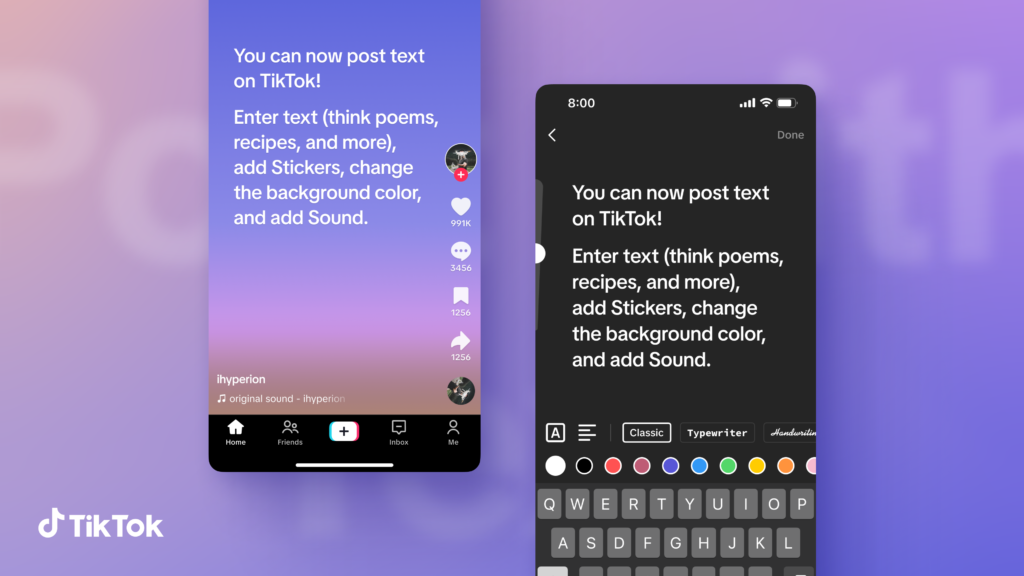
Image Credit: TikTok
TikTok has simplified the text creation process, making it easier for users to share content.
- To post a text message, a user must navigate to the camera page and select the text option.
- After choosing, the user is taken to the creation page, where they can input their material.
- They can also add songs, location tags, activate comments, and use the Duet function to personalize their content.
This inclusion of text posts demonstrates TikTok’s dedication to supporting community creativity. The addition of this function might change the platform’s fundamentals from long-form video content to short-form light text content. The range of content marketing strategies might then be explored by organizations.
TikTok has now joined the cat race with X and Threads to control the text-based market. However, X, formerly known as Twitter, is in financial turmoil due to a 50% decline in ad sales. At the same time, Thread’s popularity is steadily eroding as DAUs gradually shrink. ByteDance, the firm that owns TikTok, also made strides in generative AI with the recent launch of the CapCut plugin for ChatGPT for AI-created videos.
The stage has been set for a revolutionary shift in the social media sector with TikTok’s entry into the text-based market. As these competitors square off, social media enthusiasts anticipate a fascinating showdown in innovation and engagement.
Read More: The New World Of TikTok Marketing, Everything You Need To Know!

